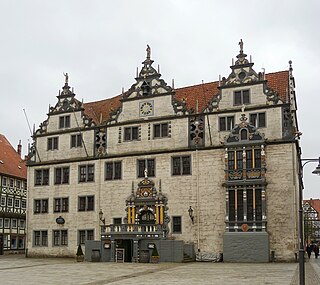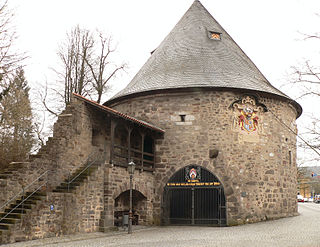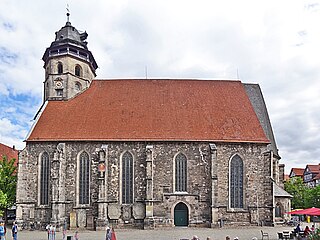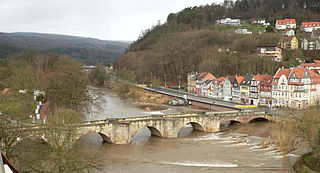Self-guided Sightseeing Tour #1 in Hann. Münden, Germany
Legend
Tour Facts
1.2 km
30 m
Experience Hann. Münden in Germany in a whole new way with our free self-guided sightseeing tour. This site not only offers you practical information and insider tips, but also a rich variety of activities and sights you shouldn't miss. Whether you love art and culture, want to explore historical sites or simply want to experience the vibrant atmosphere of a lively city - you'll find everything you need for your personal adventure here.
Individual Sights in Hann. MündenSight 1: Rotunde
The Rotunda in Münden is a former Zwinger tower in Hann. Münden in southern Lower Saxony, which belonged to the medieval city fortifications of Münden. The rotunda, built at the beginning of the 16th century, served to protect the city gate Oberes Tor, which was a bastion of the city wall on the outside.
Sight 2: St. Blasius
The Evangelical Lutheran Church of St. Blasius is a listed church building in Hann. The three-nave, Gothic hall church stands in the middle of the old town, surrounded by historic houses.
Sight 3: Historisches Rathaus

The Münden Town Hall is a listed building in the town of Hann. Münden in southern Lower Saxony, the core of which dates back to the 14th century. Through a conversion at the beginning of the 17th century, it was given its show façade in the style of the Weser Renaissance, which has been preserved to this day.
Sight 4: Historischer Packhof
The Packhof is a packing yard built in 1840 in Hann. Together with the nearby Alter Packhof, it was used during the 19th century to store goods of long-distance trade on the rivers Fulda, Weser and Werra. The listed Packhof is located on the banks of the Werra on the Wanfrieder Schlagd. Today it is used for cultural events, such as theatre performances.
Sight 5: Alte Werrabrücke
The Old Werra Bridge is a 105-metre-long stone arch bridge over the Werra in Hann. The structure, which was first mentioned in a document in 1329 as a stone bridge, connects the city with the historic suburb of Blume in the district of Questenberg. The bridge is one of the oldest preserved stone bridges in the Upper Weser and Werra areas.
Sight 6: Welfenschloss
The Guelph Castle Münden is a former castle in Hann. Münden in southern Lower Saxony, which was included in the medieval city fortifications of Münden. The palace complex, which today consists of two wings, was built from 1501 by Duke Erich I of Brunswick-Lüneburg as a residential palace with administrative headquarters in the Gothic style, with a predecessor complex to be assumed to be a medieval castle. When the Guelph Castle was destroyed by fire in 1560, Duke Erich II had it rebuilt in the style of the Weser Renaissance or Dutch Renaissance as a four-winged complex from 1571 onwards. At his death in 1584, the building was unfinished and lost its importance, as the Guelph sovereigns used it only sporadically as a place to stay. After destruction in the Thirty Years' War, the castle was used as barracks and later as a granary. Today it is the seat of public institutions.
Share
How likely are you to recommend us?
Disclaimer Please be aware of your surroundings and do not enter private property. We are not liable for any damages that occur during the tours.
GPX-Download For navigation apps and GPS devices you can download the tour as a GPX file.




